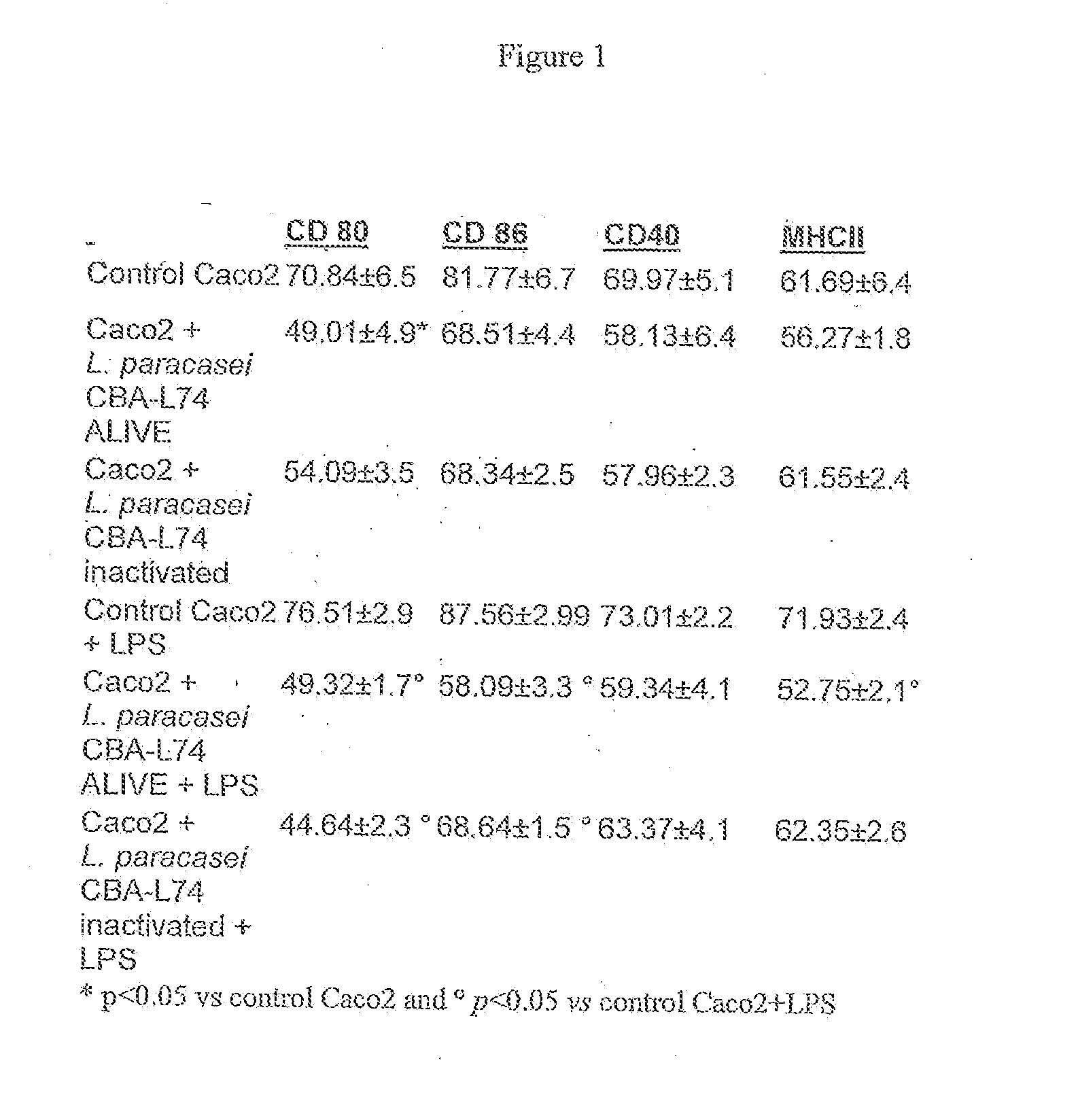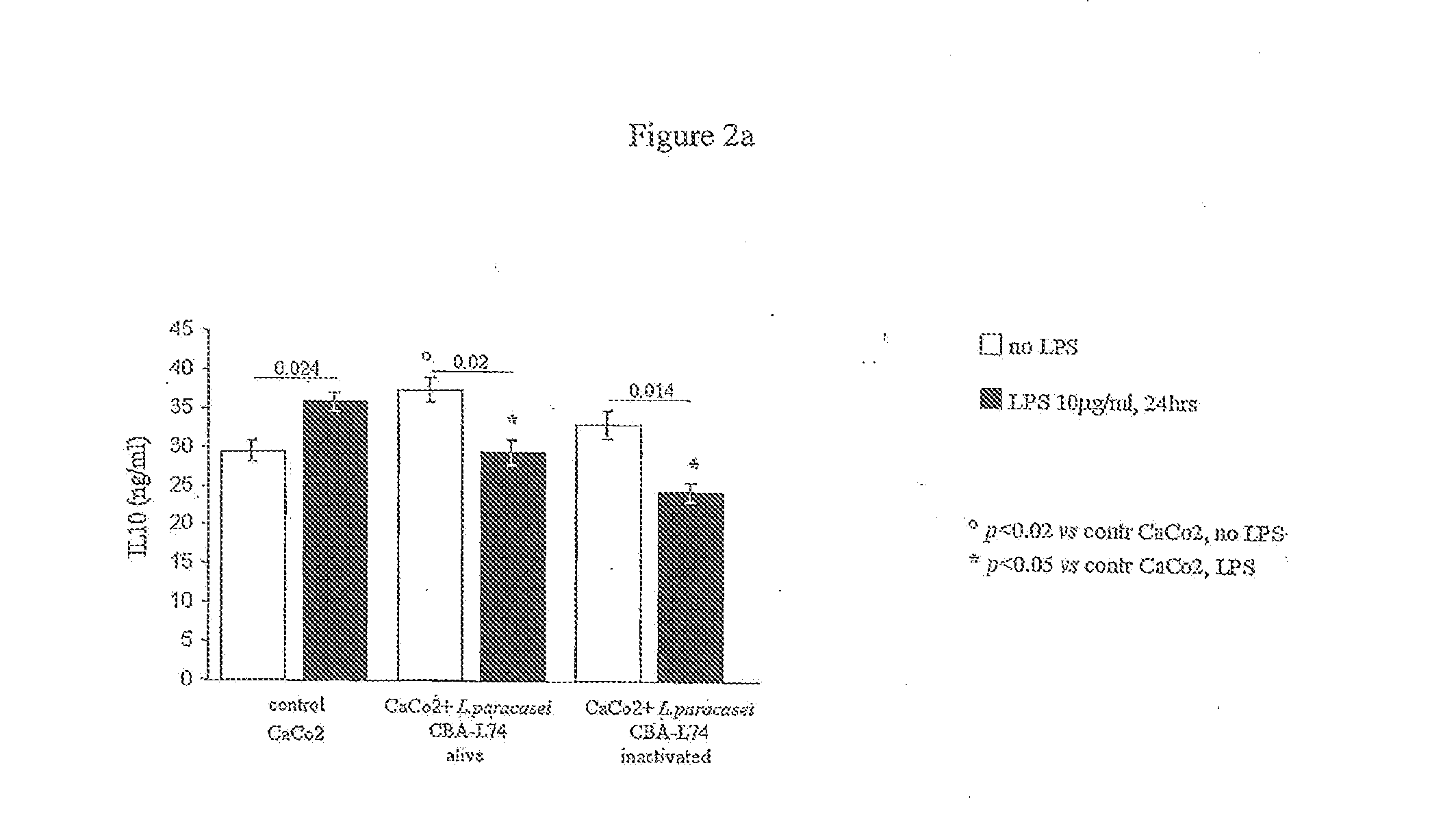Probiotic compositions and methods
a technology of compositions and probiotics, applied in the field of probiotic organisms, food products, can solve the problems of affecting the health of children, the ability of the intestinal immune system to respond to new challenges in the elderly, and the constant exposure of the intestinal epithelium,
- Summary
- Abstract
- Description
- Claims
- Application Information
AI Technical Summary
Benefits of technology
Problems solved by technology
Method used
Image
Examples
example 1
and Characterization of L.Paracasei CBA-174
[0088]We analyzed different strains of Lactobacilli for their ability to ferment aqueous suspensions containing different concentrations of rice flour or wheat flour. L.paracasei CBA L74 was selected for further analysis based on the low pH values and high CFU counts. This strain was deposited under the Budapest Treaty on the International Recognition of the Deposit of Micro-organisms for the Purposes of Patent Procedure on Sep. 9, 2008 at the Belgian Coordinated Collections of Micro-organisms (BCCM) Laboratorium voor Microbiologie (LMG), Ghent, Belgium. The Accession Number given by the International Depositary Authority is LMG P-24778.
example 2
on of L.Paracasei CBA L74 Fermented Milk
[0089]Conditions:[0090]Substrate: 9% reconstituted skim milk powder, dextrose added at 0.25%[0091]Substrate heat treatment: UHT—135° C. for 3s or equivalent F0 [0092]Co-Inoculum: 5×106 for Lactobacillus paracasei CBA-L74 5×104 for Streptococcus thermophilus (as starter of the fermentation)[0093]Fermentation Temperature: 37° C.[0094]Fermentation time: 15 h hours[0095]pH during fermentation: no adjustment[0096]At the end of the fermentation pH adjustment to 6.5 with NaOH solution[0097]Spray drying with inlet temperature 190° C. and outlet temperature 90° C.[0098]Analysis: Cells count on the fermentate to determine Streptococcus thermophilus and Lactobacillus paracasei CBA-L74
[0099]Plating: Lactobacilli selective agar (LBS) was used for detection of Lactobacillus paracasei CBA-L74. L-M17 agar was used for Streptococcus thermophilus counts. Both were incubated at 37° C. anaerobically. Plate count agar (PCA) was used for detection of contaminants a...
example 3
on of L.Paracasei CBA L74 Fermented Oat and Barley Flour
[0102]We prepared a one liter solution of 18.5% (w / vol) oat flour+5% (w / w) malted barley flour, using 185 g oat flour and 9.25 g malted barley flour. The mixture of flour and water was adjusted to pH 4,00 with 0.5 M citric acid. The fermenter was sterilized by autoclaving. Then the mixture of flour+water+citric acid was added to the fermenter.
[0103]The mixture was heat-treated at 80° C. for 30 minutes then cooled down to 37° C. Three different sets of fermentations conditions were tested. All fermentations were terminated after 16 hours, a time that coincided with the end of log phase growth,
[0104]TRIAL #1: L. paracasei CBA L74 was added to the heat-treated cereal solution to a final concentration of 2.3×106 CFU / ml and incubated with agitation at 37° C. After 16 hours count plate in MRS was 7.6×108 UFC / ml (lactic acid bacteria); contaminants measured in PCA, MC and SB were below 1000 UFC / ml. The final pH was 3.8. After 20 hours...
PUM
 Login to View More
Login to View More Abstract
Description
Claims
Application Information
 Login to View More
Login to View More - R&D
- Intellectual Property
- Life Sciences
- Materials
- Tech Scout
- Unparalleled Data Quality
- Higher Quality Content
- 60% Fewer Hallucinations
Browse by: Latest US Patents, China's latest patents, Technical Efficacy Thesaurus, Application Domain, Technology Topic, Popular Technical Reports.
© 2025 PatSnap. All rights reserved.Legal|Privacy policy|Modern Slavery Act Transparency Statement|Sitemap|About US| Contact US: help@patsnap.com



